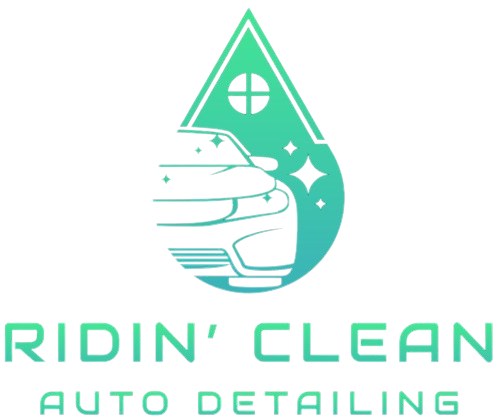When it comes to achieving a flawless, mirror-like finish on your vehicle, paint correction is the gold standard. Whether you’re battling swirl marks, oxidation, or stubborn scratches, paint correction restores clarity, depth, and gloss by leveling imperfections in the clear coat.
But not all paint correction is the same. Depending on your vehicle’s condition and your desired outcome, you may need a one-step, two-step, or multi-stage correction. Each level requires different tools, time, and expertise.
In this guide, we’ll break down the different levels of paint correction, explain what each involves, and help you decide which option is right for your car.

What Is Paint Correction?
Paint correction is a detailing process that removes imperfections in a car’s clear coat using machine polishers, pads, and abrasive compounds. These imperfections can include:
-
Swirl marks from improper washing
-
Light to deep scratches
-
Oxidation and fading
-
Water spots and etching
-
Holograms or buffer trails
By removing microscopic layers of clear coat, paint correction reveals a smooth, reflective surface that enhances shine and prepares the paint for protection with wax, sealants, or ceramic coatings.
Why Are There Different Levels of Paint Correction?
Not all vehicles require the same level of correction. A new car with minor swirls doesn’t need the same process as a ten-year-old daily driver with years of neglect.
The levels of paint correction—one-step, two-step, and multi-stage—exist to balance results with efficiency. Each step increases in time, complexity, and cost, but also in the quality of finish.
One-Step Paint Correction
What It Is
One-step correction (also called an “enhancement polish”) involves using a single polishing compound and pad combination. This step both cuts away defects and polishes the surface in one process.
When It’s Best
-
Vehicles with light swirl marks or minor haze.
-
New or well-maintained cars needing a gloss boost.
-
Car owners looking for an affordable improvement without perfection.
Benefits
-
Restores clarity and gloss.
-
Saves time and cost compared to multi-step processes.
-
Great preparation for wax or ceramic coating.
Limitations
-
Only removes about 50–70% of defects.
-
Deeper scratches and etching will remain visible.
Two-Step Paint Correction
What It Is
Two-step correction uses two distinct polishing phases:
-
Cutting/Compounding Stage – A more aggressive pad and compound remove deeper imperfections.
-
Polishing Stage – A finer polish and softer pad refine the finish, boosting clarity and depth.
When It’s Best
-
Cars with moderate swirl marks, scratches, or oxidation.
-
Vehicles that haven’t had paint correction in years.
-
Enthusiasts who want a higher level of refinement without going all-in on multi-stage work.
Benefits
-
Removes 70–90% of defects.
-
Delivers a significant improvement in gloss and depth.
-
Great balance of cost, time, and results.
Limitations
-
Requires more time and expertise than a one-step.
-
Very deep defects may still remain.
Multi-Stage Paint Correction
What It Is
Multi-stage correction is the most intensive option, involving three or more stages of cutting and polishing. Each stage uses progressively finer compounds and pads until the finish reaches near perfection.
When It’s Best
-
Show cars, luxury vehicles, and high-end restorations.
-
Heavily neglected or severely scratched paint.
-
Car owners seeking the highest possible finish quality.
Benefits
-
Removes up to 95–99% of defects.
-
Produces a showroom or concours-level finish.
-
Maximizes paint depth, clarity, and gloss.
Limitations
-
Most time-consuming and costly.
-
May remove more clear coat, reducing long-term paint thickness.
-
Typically unnecessary for daily drivers.
Comparing the Levels of Paint Correction
| Feature | One-Step | Two-Step | Multi-Stage |
|---|---|---|---|
| Defect Removal | 50–70% | 70–90% | 95–99% |
| Time Required | Low | Medium | High |
| Cost | Low | Medium | High |
| Best For | Light swirls, new cars | Moderate defects, daily drivers | Severe defects, show cars |
Choosing the Right Level for Your Car
When deciding on a paint correction service, consider:
-
Condition of the Paint – Light swirls? One-step may be enough. Heavy scratches? You’ll need two-step or more.
-
Your Goals – Do you want a quick enhancement or a flawless, showroom-ready finish?
-
Budget & Time – Multi-stage correction takes significant time and investment. For most daily drivers, two-step is the sweet spot.
-
Future Protection – Pairing paint correction with a ceramic coating maximizes longevity and keeps your vehicle looking fresh for years.
Why Professional Paint Correction Matters
While DIY kits are available, professional paint correction ensures:
-
Proper evaluation of your paint’s thickness and condition.
-
Correct pad, polish, and machine selection for safe correction.
-
Even, swirl-free results that last.
Attempting multi-stage correction without experience risks burning through clear coat or leaving holograms. A professional detailer has the training, equipment, and patience to get it right.
Final Thoughts
Paint correction is one of the most effective ways to transform your car’s appearance, restoring depth, gloss, and clarity that no simple wash or wax can achieve.
-
One-step: Best for light correction and quick gloss.
-
Two-step: Ideal balance of correction and refinement.
-
Multi-stage: Ultimate perfection for high-end or heavily damaged paint.
No matter which level you choose, pairing correction with a ceramic coating or wax will protect your investment and keep your car looking flawless longer.
At Ridin’ Clean Auto Detailing, we specialize in professional paint correction, ceramic coatings, auto detailing, and car waxing in San Diego. Whether your vehicle needs a light enhancement or a full multi-stage correction, our experts will deliver stunning results with lasting protection.
Contact Ridin’ Clean Auto Detailing today and let us bring your car’s paint back to life with the perfect level of correction!
